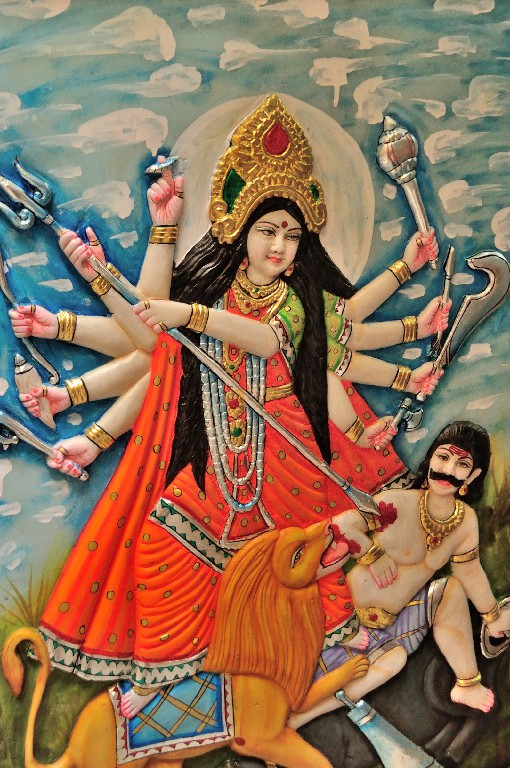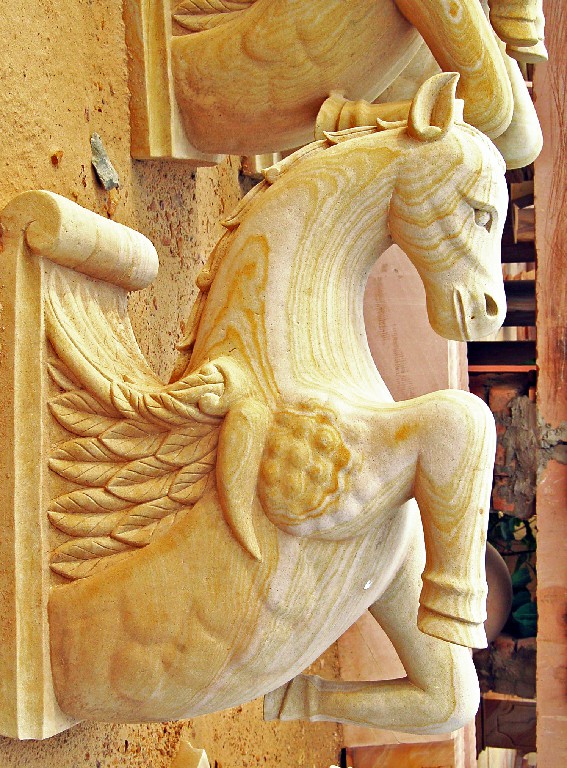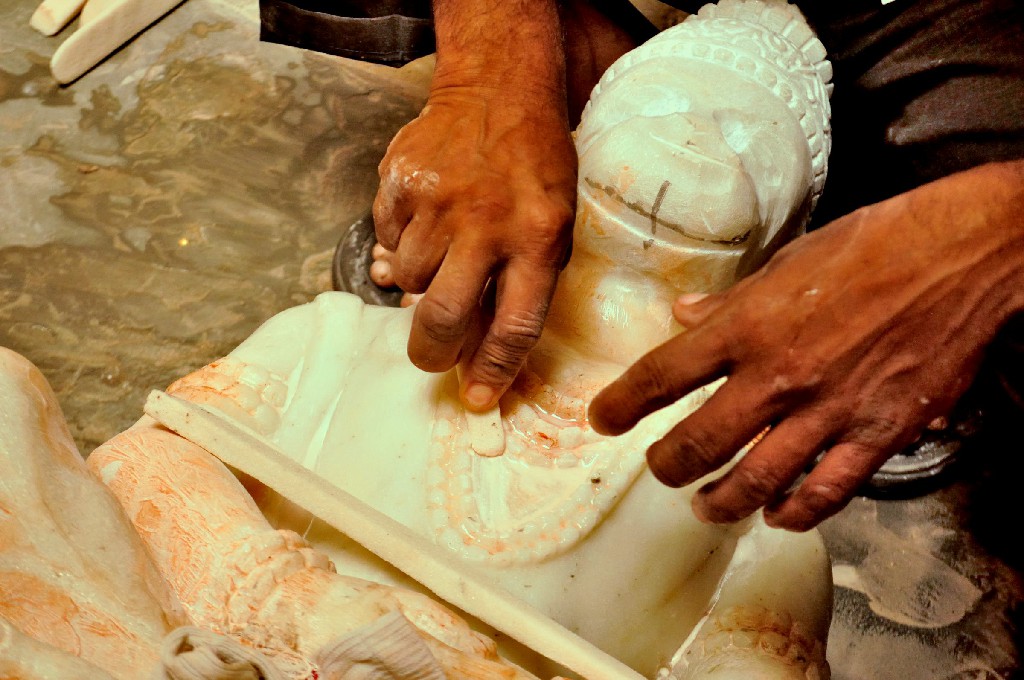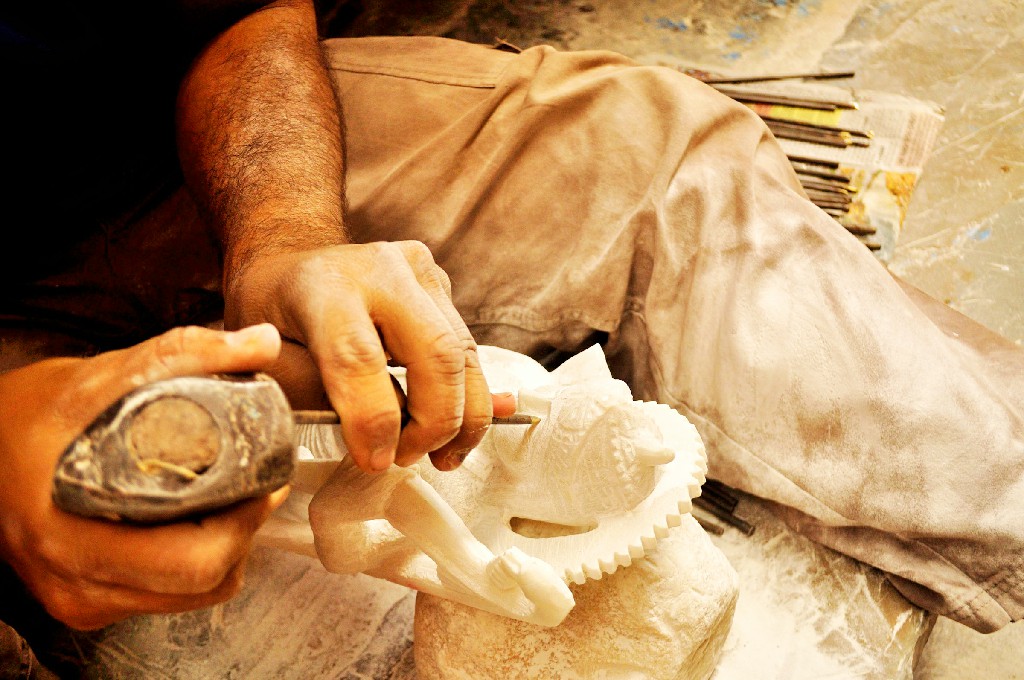Jaipur is a hub for hand-carved marble wear especially statues and bowls. A reason for the high quality of craft development is also proximity to quarries in Makarana, Dungarpur, and Dausa, which were all traditionally leading centres for high-quality stone. Over the years, many craftspersons from other regions in Rajasthan have migrated to Jaipur purely because it offers good facilities, transportation, and a better market for finished products. The thriving community is now mostly settled in the old city in and around Khazanewalon ka rasta and Bhindo ka rasta. These murtikaar (sculptors) mostly work in creating idols of deities.
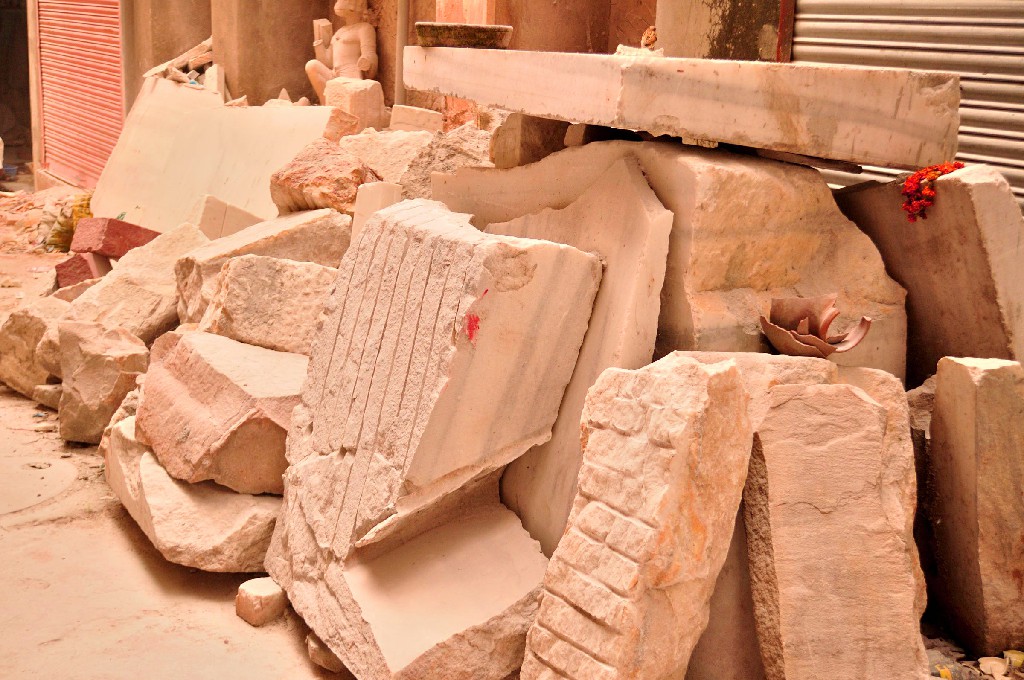
First, a drawing of the desired design is created on paper to scale to act as a reference. The drawing is marked with a grid that divides the sculptors into symmetric units. The image follows very strict guidelines, so much so that certain sculptors specialize in creating images of certain deities.
The stone is then cut and shaped using power tools, in the beginning, to saw off the major chunks of stone. Chisels and other hand tools are then used to carve the major details with care. The stone is dressed and polished to a fine texture. Most idols in Jaipur are made in marble and are polished carefully using hand tools. This involves using an iron brush to give the statue a weathered finish, staining it with tea to give it a deep brown colour that soaks into the stone.
These sculptures are then hand-painted and dressed up with metal or paper mâché crowns and adorned with smaller pieces of jewellery to finish the look. Marble sculptures can be fully hand-painted using a golden applique to highlight crowns and other jewellery.
This craft has evolved over the past century and the market is constantly expanding for stone carved idols and artefacts. While new stone carving clusters continue to grow outside Jaipur as well, a steady stream of craft persons’ lives and work in the walled city.

